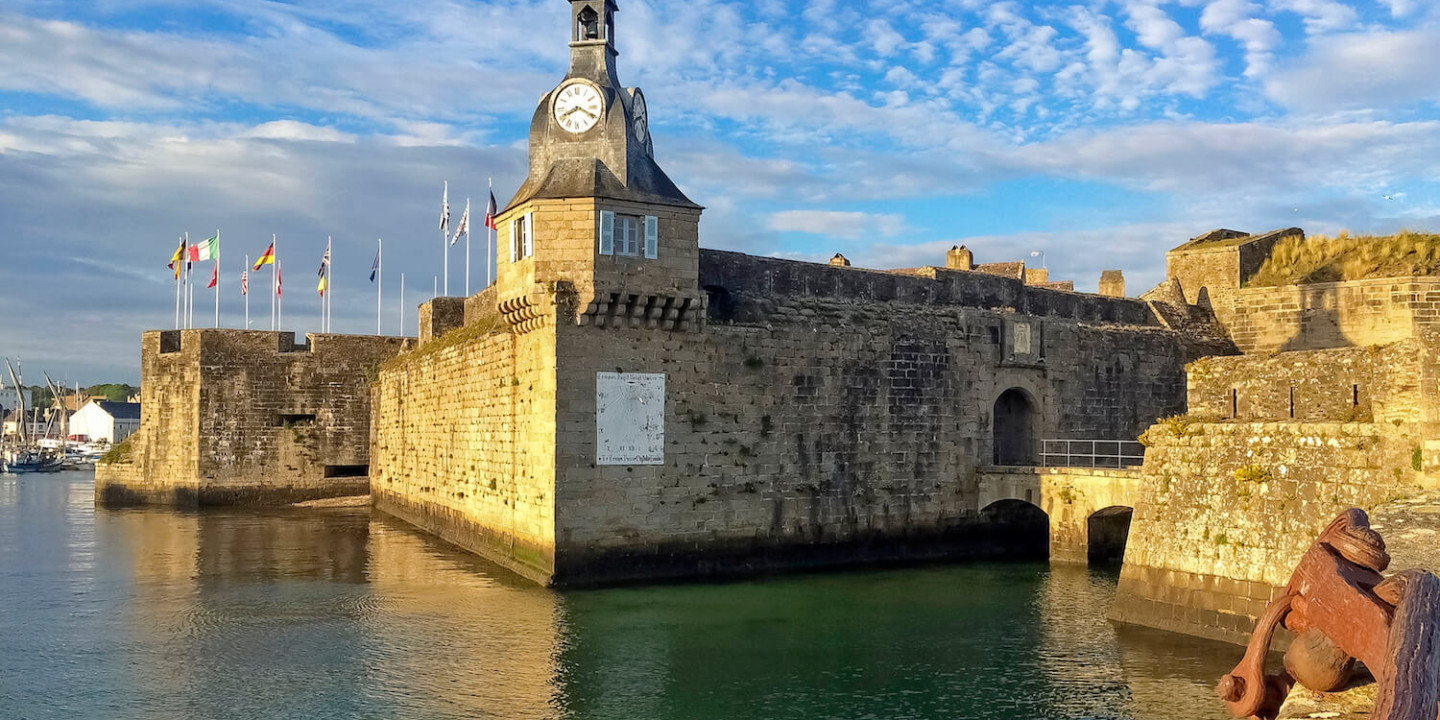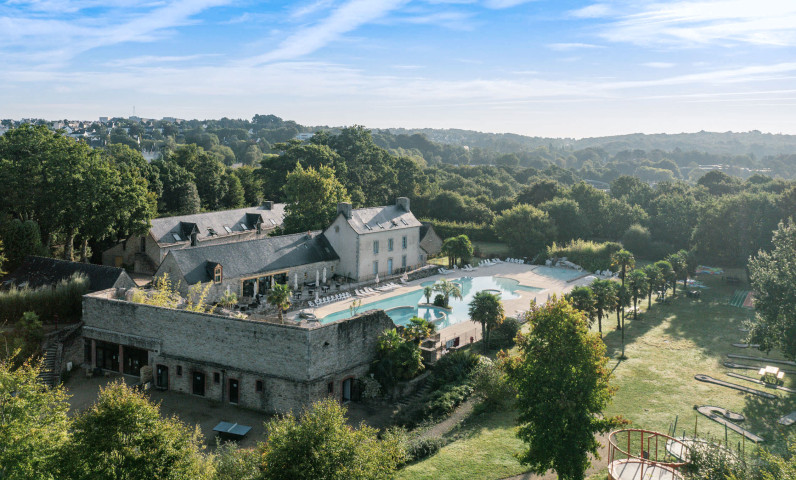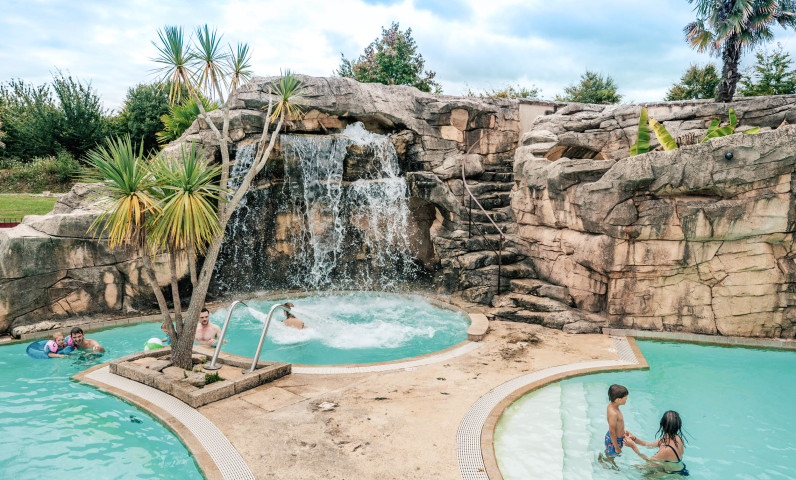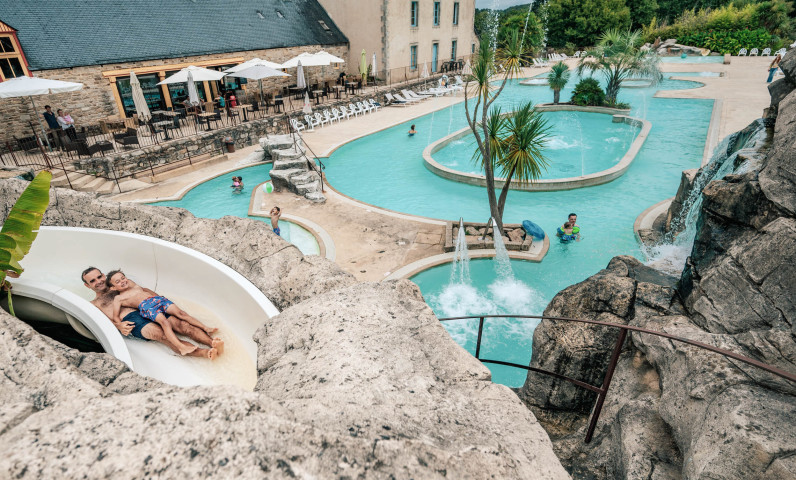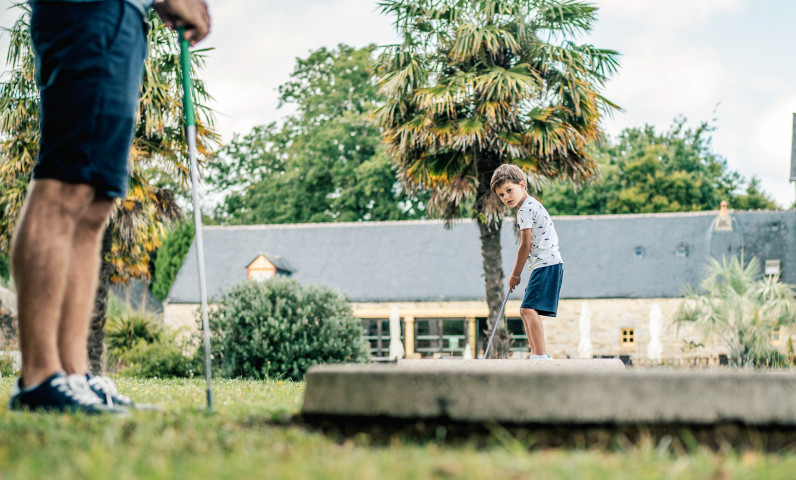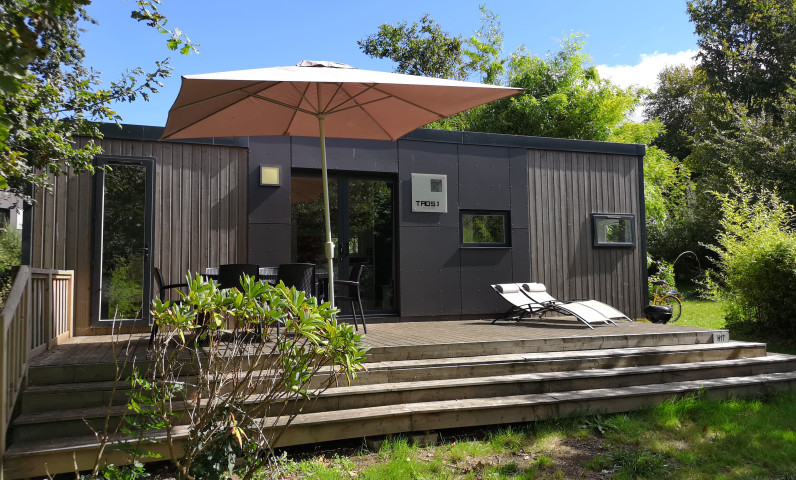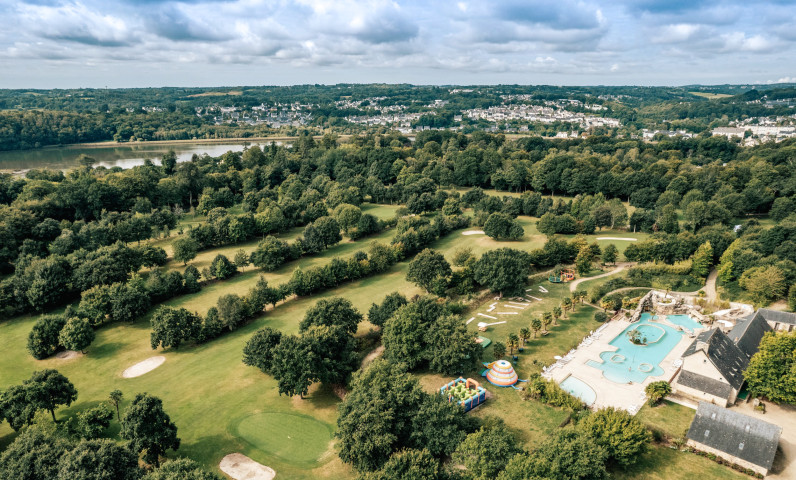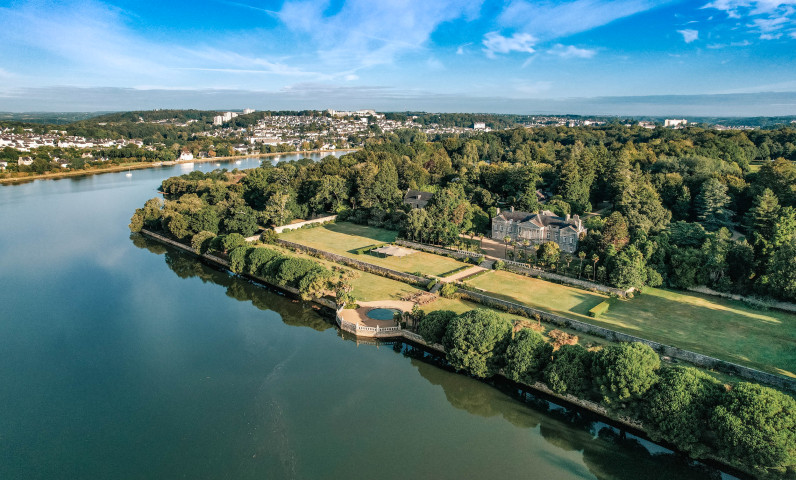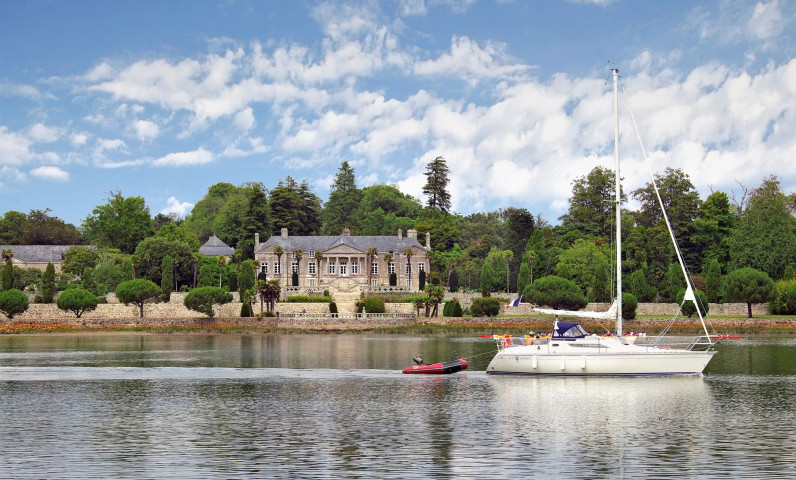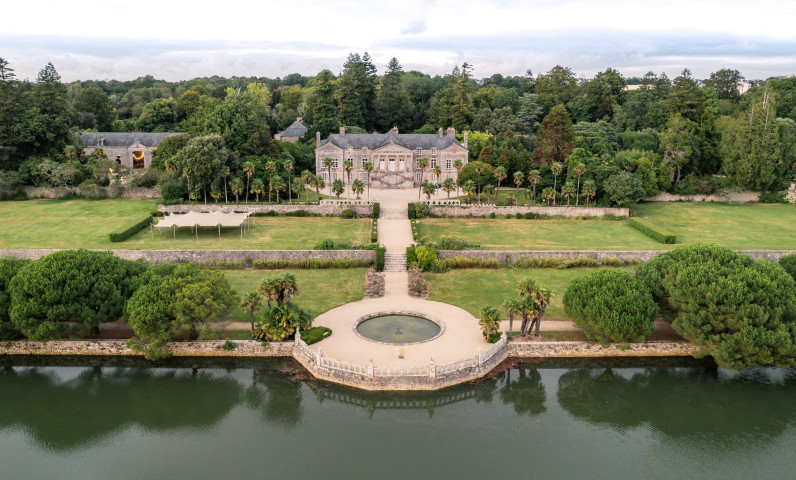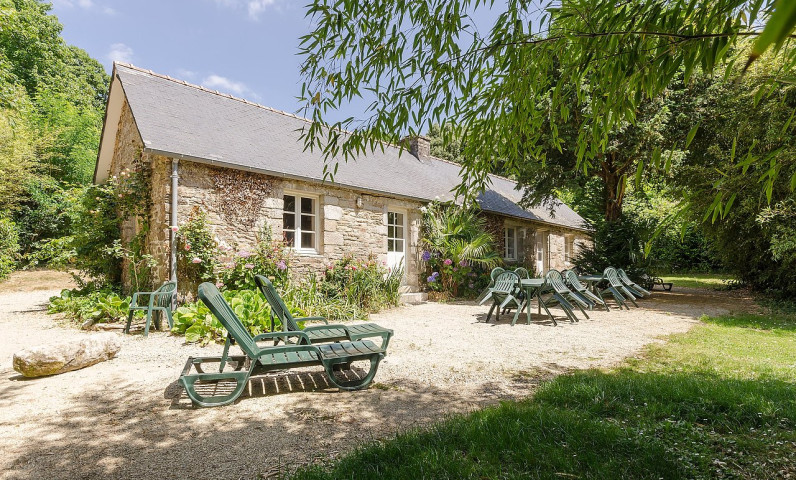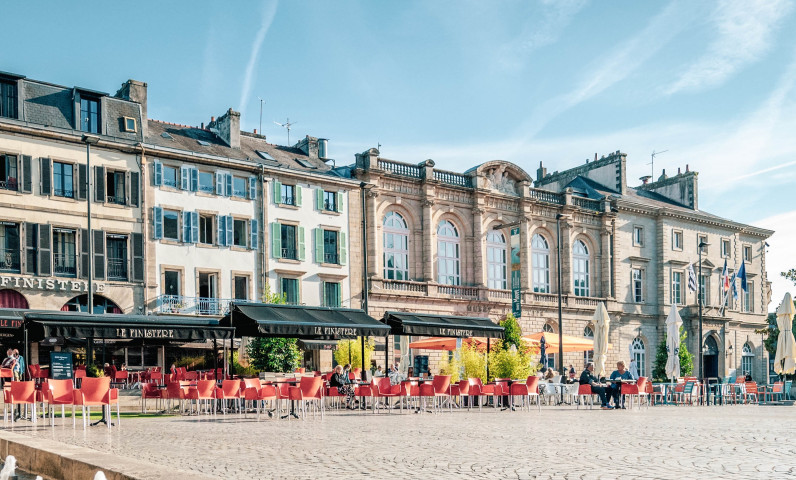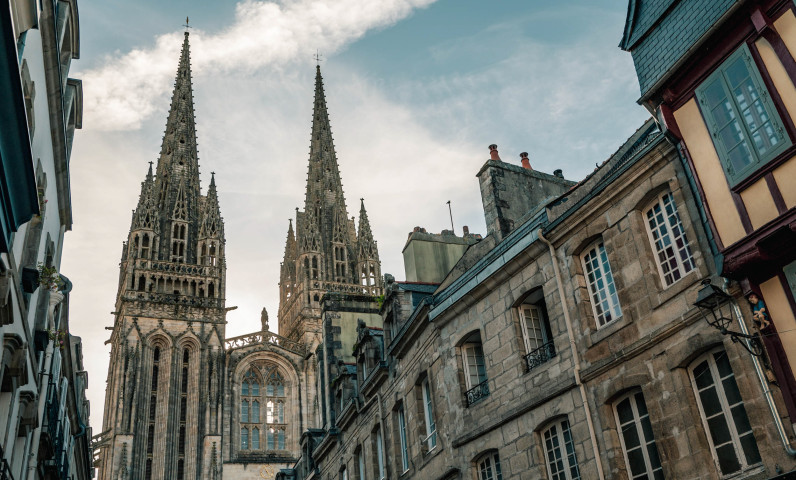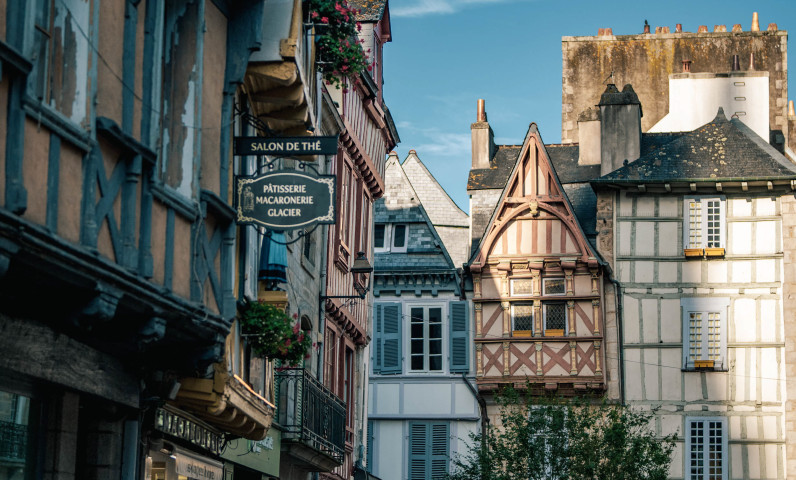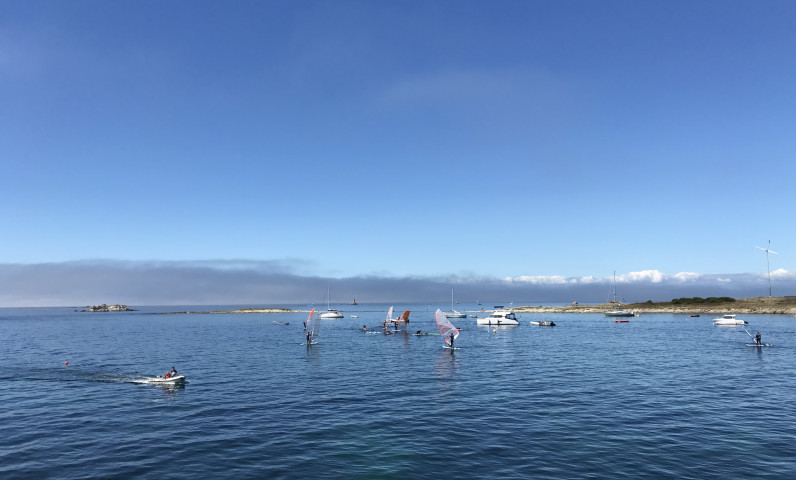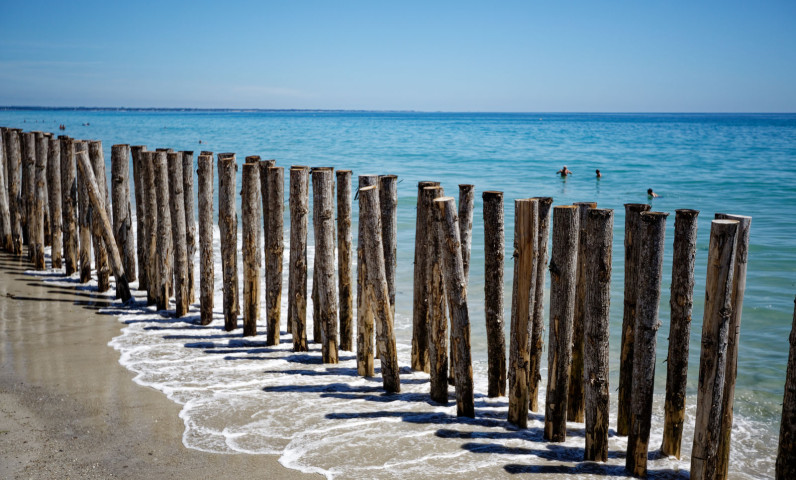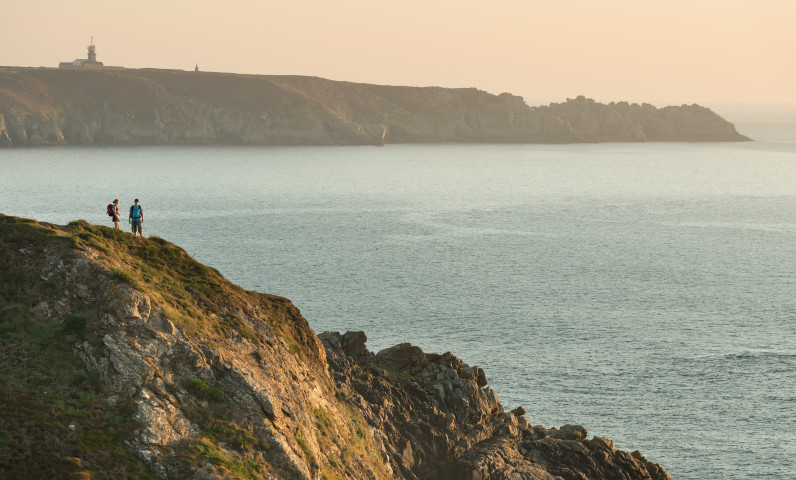CONCARNEAU: (TOWN ATTACHED TO THE PONT AVEN SCHOOL FOR A FEW YEARS)
This coastal town, an ancient fortress, has multiple facets that will enchant you: it is both a city of art and history, a recognized fishing port, and a seaside resort. Its historical heart, the walled city, is enclosed by ramparts that form a large part of the town's identity.
The numerous must-see places in the town such as the front port, the dike, and of course the ramparts, have undoubtedly been the favorite motifs of painters. There is also a Fishing Museum located within the walls of the town, which traces the history and techniques of maritime fishing worldwide, thanks in particular to numerous sculptures and paintings by Breton artists on the theme of fishing. To stroll through the subjects that have inspired painters, nothing beats a visit to the Porte aux Vins, one of the charming places in the town where boats used to come aground and which inspired numerous artists such as Théophile Deyrolles. Likewise, the Porte du Passage, also in the town, inspired the painter Lucien Gros (1845/1913).
Another place steeped in history, the Croix district can be appreciated in many ways. This observatory created by Vauban allowed for the surveillance of the Walled City, the port, or the quays of the district, and this place notably housed the residence of the painter Alfred Guillou. In this same vein, you can let yourself be guided towards the Marinarium, an experimental aquarium created by the artist's father, M. Guillou. You can admire the typical maritime fauna of our region there.
- 3rd fishing port: a favorite subject of painters, especially the front port between the dike and the ramparts.
- Fishing Museum: open all year from 10 am to 12:30 pm and from 2:30 pm to 6 pm (from 10 am to 8 pm in season). You can see sculptures, statues, and numerous paintings by Breton artists.
- Porte aux Vins: a place where boats used to come aground, offering artists, notably Théophile Deyrolle, the opportunity to paint beautiful scenes.
- The Croix district: an observatory towards the Walled City (a work of Vauban), the fishing port, or the Quai de la Croix and the chapel. You can find Alfred Guillou's house where the painter had his studio there.
- The Marinarium: Place de la Croix: open from 8 am to 12 pm and from 3 pm to 5 pm. It is a large experimental aquarium maintained by the artist's father: Mr. Guillou. You can find all kinds of fish and crustaceans there.
Lanniron's favorite
Among the charming small stops in the town, we recommend the Comptoir du Matelot, a great specialist in marine clothing that will welcome you with joy in the heart of the walled city. And if you're feeling a bit hungry, stop by La Maison du Kouign Amann, recognized for making the best in the region, run by a master French pastry chef.
PONT AVEN
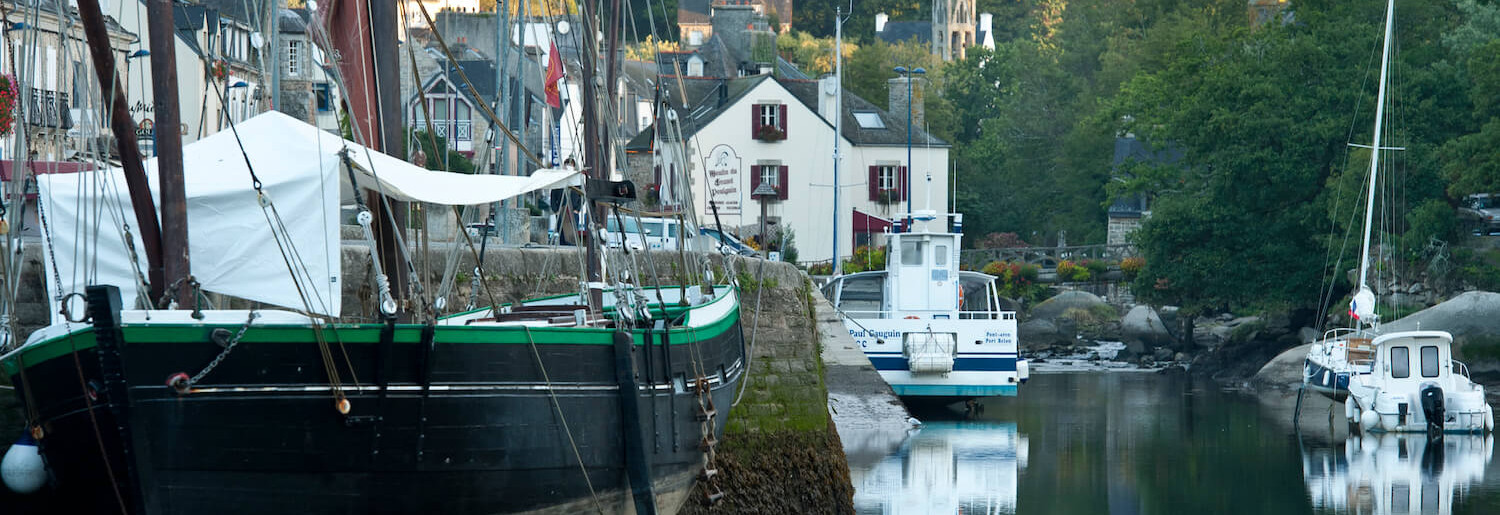
Creation of the painting school under the influence of Gauguin that marked the beginning of post-impressionism
This charming small town crossed by the Aven river is famous for having hosted a painting school initiated under the impulse of Paul Gauguin, which gave birth to a post-impressionist movement as well as the Nabis movement.
The museum is a must-see, dedicated to the Pont Aven School, it offers in addition to its permanent collections, temporary exhibitions intended to make the painters of Pont-Aven and Brittany better known to a wider audience.
But to have attracted so many painters, Pont Aven owes much to the remarkable landscapes in which it is situated. One can stroll along the promenade des Moulins which, with its 15 mills, inspired beautiful painting moments before inspiring beautiful walks to walkers.
Then, the Bois d'Amour will brighten up the walk, leading you into the woods by the edge of the Aven. This place was highly appreciated by the painters of the Pont Aven school, as can be seen through Madeleine au bois d'Amour (1888) by Émile Bernard or L'incantation ou le bois sacré (1891) by Paul Sérusier.
And don't forget the yellow Christ of Trémalo, housed in a 16th-century chapel, it is this 17th-century wooden Christ that inspired Gauguin for his famous Yellow Christ (1889).
- The Museum: Place de l'Hôtel de Ville. Open from 10am to 12:30pm and from 2pm to 7pm. It is dedicated to temporary exhibitions intended to make the painters of Pont-Aven and Brittany better known.
- Les Moulins: often represented by painters, especially the "Moulin David" painted by Gauguin in 1894.
- At Bois d'Amour: Woods where the painters of Pont-Aven like to go.
- The Yellow Christ of Trémalo: 16th-century chapel with inside the 17th-century wooden Christ that served as a model for Gauguin's "Yellow Christ".
The favorite of Lanniron:
The small glassworks, "Un souffle de verre", in the heart of Pont-Aven will offer you beautiful artisanal pieces and the possibility to attend glass blowing.
RIEC-SUR-BELON

Commune located between 2 estuaries formed by the Aven and the Belon
This small town nestled between the rivers Aven and Belon was home to Mélanie Rouat's inn, a place of residence for many passing artists. While the house has now disappeared, painter Kousnetoff who once lived there produced a beautiful series of paintings on the Belon valley. You can also visit the museum, located on the port, dedicated to what made the town famous: oysters.
The favorite of Lanniron:
Oyster park where you can taste delicious oysters by the seaside.
MOELAN-SUR-MER
Very beautiful coastal landscape often depicted by the Russian painter Kousnetoff (1863/1936) who often came to isolate himself in this town.
The favorite of Lanniron:
The lovely coastal path that connects Riec-sur-Belon and Moëlan-sur-Mer. You will be charmed by this small path that will take you through numerous small coves and beautiful landscapes.
QUIMPERLE
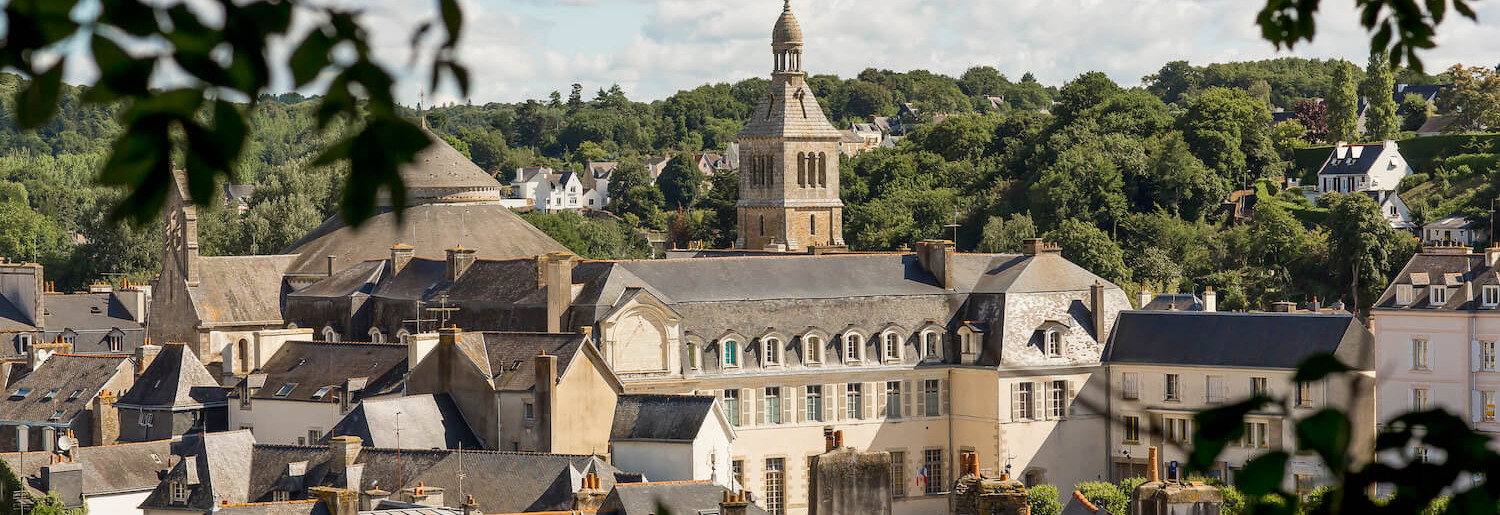
(This charming fishing port has often been depicted by Breton painters or those passing through Brittany. But the town itself is full of beautiful buildings, particularly in the upper town where there are some remarkable residences such as the old houses on Rue Brémont d'Ars. There is an exhibition hall there which was once a hall topped by the Auditorium: the Royal Sénéchaussée Court. Among the charming wooden houses in the town is the Maison des Archers, a beautiful 1550s residence which houses temporary exhibitions throughout the year.
Another beautiful element of the town that has inspired the strolls of painters as well as their paintings is the fortified medieval monument Pont Fleur that spans the Ellé. This pretty bridge was a very popular motif for the painter Sidaner.
Lanniron's favorite
If you are looking for a place to eat and rest, Le Médiéval and La Tête de Lard will delight you. Le Médiéval, this small character brewery, deserves its name thanks to its very medieval atmosphere and decoration. La Tête de Lard, on the other hand, is located in the lower town. This typical Breton house will delight you with its specialty, the brasérade, a small charcoal barbecue placed on the table.)
ROSPORDEN
This town is an interesting walk to follow in the footsteps of the painters of Brittany. We can find the landscapes of the works of Adolphe Leleux (1812/1891), the inventor of the theme of the Breton peasant in the 1840s, who made a series of studies there such as the painting Les femmes de Rosporden. The 17th-century St Eloi Chapel dedicated to St Alar is also one of the remarkable places in the town and was immortalized by the painter Maxime Maufra in his work La chapelle de Rosporden (1898).
Lanniron's favorite
A little walk around the ponds of Rosporden is a must to soak up the place. You can stroll and discover the fauna and flora. An ideal walk for families thanks to the children's play facilities around the site.
